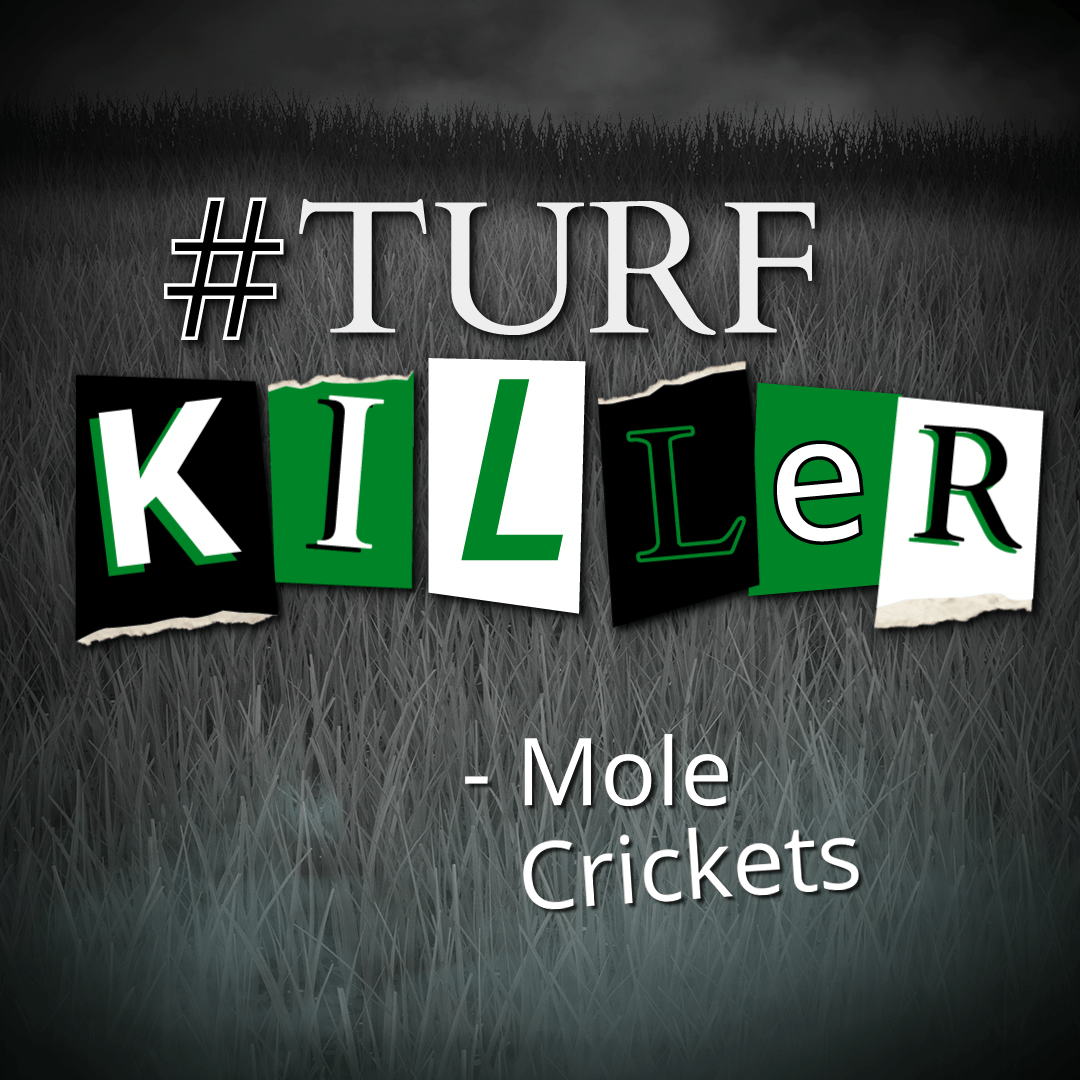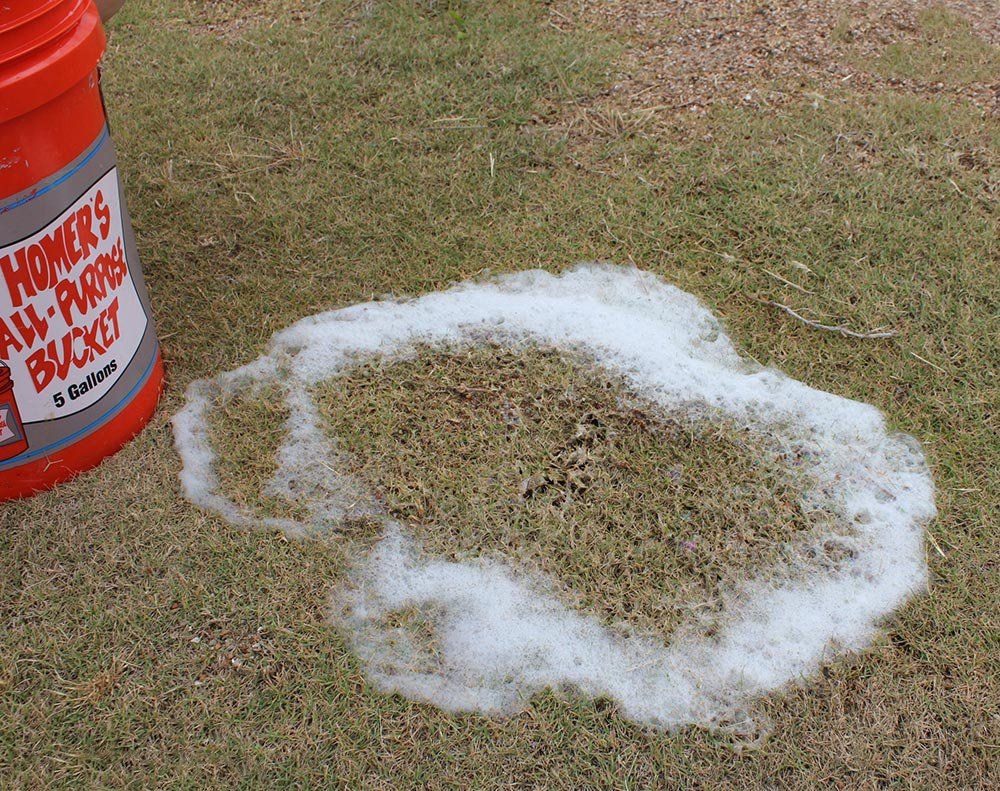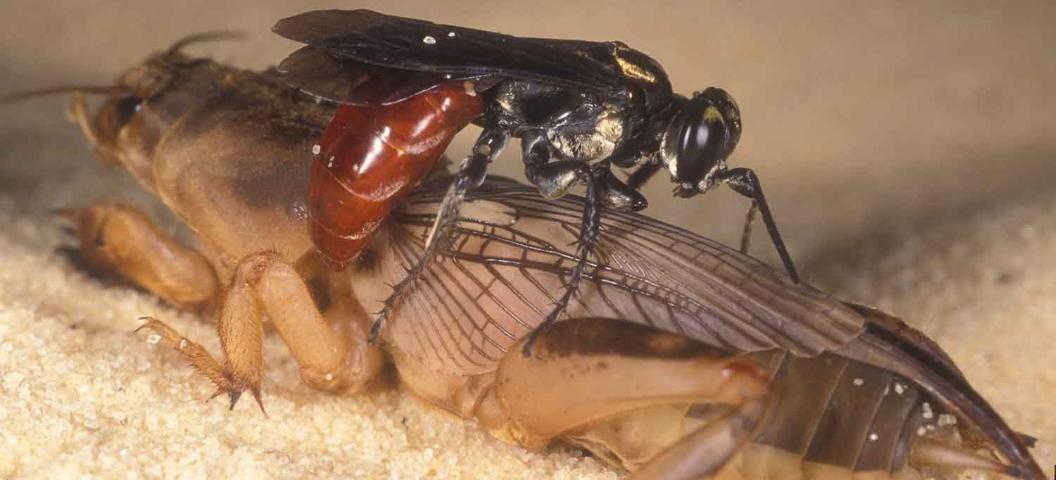DESCRIPTION
Mole crickets are an unusual family of crickets that live underground. They have distinct front legs that assist them in tunneling through soil, hence how they get their name, "Mole" crickets. They are a common pest that can be found around the world and throughout the United States but are most know to be an issue in the south, damaging crops and turfgrass alike.
There are actually several different species of mole crickets: the tawny (Neoscapteriscus vicinus), southern (Neoscapteriscus borellii), and short-winged (Neoscapteriscus abbreviates) mole crickets. The northern mole cricket (Neocurtilla hexadactyla) is the only species not considered a pest.
DAMAGE
Mole cricket damage is characterized by small networks of underground paths with elevated and bulged-up soil. The crickets damage grass seedings, foliage and stem tissue above ground and while below ground, (roughly 20 cm from the surface) they feed on roots and tubers. They tunnel below soil surface up to 20 feet per night dislodging plants and exposing the grass roots to desiccation, which causes them to dry out from reduced ability for water intake. They can lay 25 to 60 eggs beneath the soil, upon hatching, they burrow to the soil surface to feed (typically during the evening hours). The damage these ‘nymphs’ cause increases as they disperse and grow to adulthood.
The presence of theses creatures are not only damaging on their own, but they also attract larger turf-destroying predators such as raccoons, moles, skunks and voles.
The mole crickets are active year-around in southern states, but do most of their damage in spring from March until June, or in the fall from late August to early October.
MANAGEMENT
Before you even begin a control program, you need to determine you actually have a mole cricket infestation. First, mix 3 tablespoons of dish soap with 2 gallons of water, pour solution over suspected infested area. If you’re infested, the mole crickets will emerge from their burrows rather quickly, if present. It is then you can catch and neutralize them.
Cultural controls include not mowing your turf shorter than recommended and being sure to use a sharp blade when you mow. Proper irrigation practices as well as maintaining a neutral soil pH can also help to reduce the chance of Mole Cricket infestations.
Biological controls such as the Larra Wasp (larra bicolor), which is a natural enemy of each of the invasive mole cricket species, exist and require the planting of favored flowering plants to attract them to the area.
Another beneficial organism that will swim through soil and attack adult mole crickets are the parasitic nematodes, or microscopic round worms found in the mole cricket’s native South America. Once the nematode has entered the mole cricket’s body, a bacterium is released, killing the cricket and allowing the nematode to reproduce several hundred more to continue searching the soil for more hosts.
Granular fertilizer plus an insecticide is recommended to control these pests and repair the damage to the roots and stems of the turfgrass affected. Insecticides (Active Ingredients, AI's) such as bifenthrin
and imidacloprid
( found in brands like Allectus, Merit and Talstar) have proven to be effective methods of control. These technologies have sufficient residual activity so that applications for control of subsurface feeders, such as mole crickets, can be made preceding the egg-laying activity. It is recommended that you follow application with sufficient irrigation or rainfall to move the active ingredient into the soil.
PREVENTION
If you are in an area, which is prone to mole cricket damage or if you have had an infestation in the past, prevention is key. Typically, once an infestation is discovered the damage may be to grave repair. Annual applications of control products (example: Allectus, Merit and Talstar) are often recommended because an area that has been infested by mole crickets are likely to be re-infested. It would be wise to keep a record of these preferred mole cricket habitats for future application.
For professional fertilizers, humic and AMP-XC™ enriched products available, please visit TurfCare’s online Product Catalog.
For green industry professionals or others interested in ordering Turfcare products, please contact our Customer Service to find a distributor near you.
References:
https://edis.ifas.ufl.edu/in1021
https://sfyl.ifas.ufl.edu/lawn-and-garden/mole-crickets/
http://entnemdept.ufl.edu/creatures/ORN/TURF/pest_mole_crickets.htm
https://content.ces.ncsu.edu/mole-cricket-in-turf
https://stoppestinfo.com/263-how-to-get-rid-of-mole-crickets.html
http://media.clemson.edu/public/turfgrass/2018%20Pesticide%20RECS/2018%20Pest%20Control%20Recommendations.pdf
https://hgic.clemson.edu/factsheet/mole-cricket-management-in-turfgrass/
https://www.turfcaresupply.com/upload/documents/label/903064.pdf
https://edis.ifas.ufl.edu/LyraEDISServlet?command=getImageDetail&image_soid=FIGURE%202&document_soid=IN1021&document_version=84502
https://edis.ifas.ufl.edu/LyraEDISServlet?command=getImageDetail&image_soid=FIGURE%203&document_soid=IN1021&document_version=84502
https://sfyl.ifas.ufl.edu/lawn-and-garden/mole-crickets/
https://edis.ifas.ufl.edu/LyraEDISServlet?command=getImageDetail&image_soid=FIGURE%2013&document_soid=IN1021&document_version=84502
Turf Care Supply - TurfReport Blog
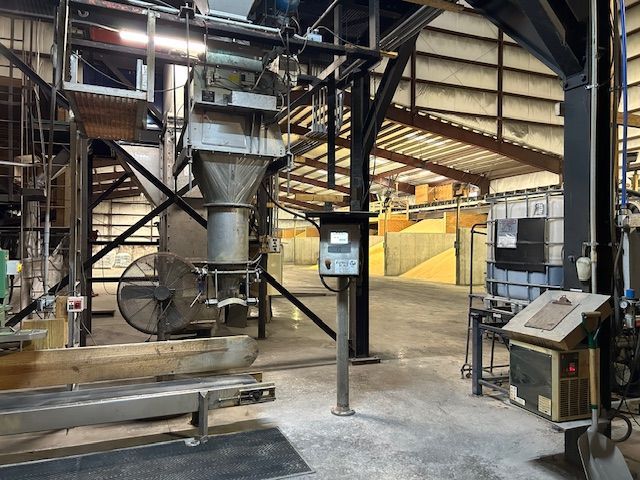
Turf Care Supply, LLC, a portfolio company of Platte River Equity, has officially acquired Beaty Fertilizer, the industry respected Tennessee-based manufacturer and blender of custom granular and liquid fertilizers, as well as combination products. This strategic move expands Turf Care’s manufacturing footprint, adds new product capabilities, and enhances overall production capacity. “The partnership with Beaty Fertilizer marks a major milestone in our journey and an important step forward in our mission to grow, innovate and lead in our industry,” said Mark Mangan, President of Turf Care. “This acquisition is more than just expansion; it’s a powerful opportunity to strengthen our product offerings, broaden our market reach and provide greater value to our customers. By welcoming Beaty into the Turf Care family, we are reinforcing our commitment to excellence and positioning ourselves for an even brighter future.” “We are excited about this next step in the Beaty Fertilizer story. For almost 50 years, our family and our employees have worked hard to serve customers and communities with pride and heart,” said John Beaty, President of Beaty. “Now, we are embracing an opportunity for growth with Turf Care. With our combined know-how and resources, we’ll keep building on what we’ve worked so hard to create and bring even more value to our customers, employees and partners. We truly believe this partnership will keep the Beaty legacy going strong while opening up new doors for growth and innovation.” Tarun Kanthety, Vice President at Platte River, added, “We believe the acquisition of Beaty Fertilizer represents a strategic step in expanding Turf Care’s footprint and product breadth... as it scales and enhances its value proposition to customers.”
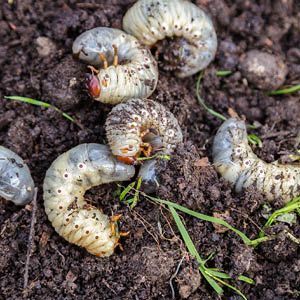
Root out Grubs, Before they Attack Yours! White grubs, the immature stage of several scarab beetles—including Japanese beetles, masked chafers, May and June beetles, and green June beetles—are a major threat to turfgrass across the Southeast. These beetles follow a complete metamorphosis (egg, grub, pupa, adult), with most species completing their cycle in one year. Eggs are laid in early summer, grubs hatch within two weeks, and begin feeding on turfgrass roots through the late summer and fall. May and June beetles differ slightly, with a two- to three-year life cycle and prolonged feeding as third-instar grubs. Grubs damage turf by severing roots, causing grass to yellow, wilt, or lift easily from the soil. Feeding is typically concentrated in patches and worsens during hot, dry weather. Wildlife digging for grubs can create further turf destruction. Healthy turf may tolerate 5–10 grubs per square foot, but damage becomes evident as populations rise or turf is under stress. Early detection and timing are essential. Scouting begins in late June, shortly after adult beetle activity peaks. Monitoring plants favored by beetles can signal egg-laying is underway. Treatment is most effective when small grubs are active—typically from mid-July through early August. For professional turfgrass managers, insecticides containing imidacloprid (Merit®), chlorantraniliprole (Acelepryn®), or trichlorfon (Dylox®) are the most effective tools. The primary months of preventative application of Acelepryn® is from April to end of May and Merit® from April into July - targeting grubs before they hatch. Curative treatments with Dylox® or similar products are applied July through the fall, when young grubs are feeding and most vulnerable. Always follow label directions for optimal application and safety. Timing may vary slightly by regional seasonal needs. Turf Care Supply has a variety of professional TCS Growstar insecticide fertilizers available to protect your turf and prevent grub damage, before it starts. Click on the button below to view products, contact your sales rep for addition TC Growstar products available.
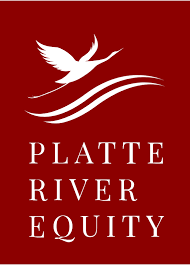
Platte River Equity Portfolio Company Turf Care Supply, LLC Acquires Agri-Nutrients, Inc. Brunswick, OH , October 9, 2024 – Platte River Equity (“Platte River”) portfolio company Turf Care Supply, LLC (“Turf Care”) is pleased to announce its acquisition of Agri-Nutrients, Inc. (“Agri-Nutrients”), a manufacturer and blender of custom granular fertilizers for the turf & ornamental (“T&O”) industry. This strategic acquisition provides Turf Care with an established presence in the south-central United States, an enhanced product portfolio and additional manufacturing capacity. “This acquisition represents much more than a business transaction; it is a strategic step forward in expanding our reach and enhancing our customers’ growth. By bringing Agri-Nutrients into the Turf Care family, we are broadening our product portfolio, expanding our market presence and further positioning ourselves as a leader in providing innovative solutions for our customers,” said Mark Mangan, President of Turf Care. “We are excited about joining the Turf Care team,” said Jim Montgomery, President of Agri-Nutrients. “At Agri-Nutrients, our core values center around customer service and product innovation, and we are confident that this combination will allow us to better serve the needs of our customers.” “Platte River welcomes the Agri-Nutrients team to Turf Care. This transaction underscores our long-term commitment to fostering growth through both organic and inorganic initiatives across the Turf Care platform,” said Tarun Kanthety, Vice President of Platte River. “The partnership with Agri-Nutrients strengthens Turf Care’s value-added offering, creating additional growth opportunities across the combined customer base.” B&A Corporate Advisors served as the exclusive financial advisor to Agri-Nutrients. About Agri-Nutrients Founded in 1992 and based in Catoosa, OK, Agri-Nutrients is a manufacturer and blender of custom granular fertilizers for the T&O industry, predominantly selling into the lawn care, sports turf and golf course end markets. About Turf Care Supply Established in 1974, Turf Care Supply is one of the largest formulators and blenders of urea products to the T&O market. Turf Care has a comprehensive product portfolio of fertilizers, combination products (herbicide/insecticide), soil amendments and enhanced efficiency fertilizer ingredients. Turf Care's products are sold to distributors and blenders serving the commercial, residential and golf end markets. Turf Care operates four manufacturing facilities strategically located throughout the eastern U.S. About Platte River Equity Founded in 2006 and based in Denver, CO, Platte River Equity is a private equity firm focused on investments in established lower middle market operating companies within targeted industrial sectors where it has substantial operating and investing experience. Platte River utilizes prudent capital structures in order to invest in future growth opportunities and withstand changing economic environments. The firm also provides significant ongoing support to its portfolio companies through dedicated resources across functional areas. The firm has raised funds with committed capital in excess of $1.6 billion and is currently investing out of its fifth fund. The Platte River team is the largest collective investor across its funds, deeply aligning the firm with its investors and portfolio company management teams.

